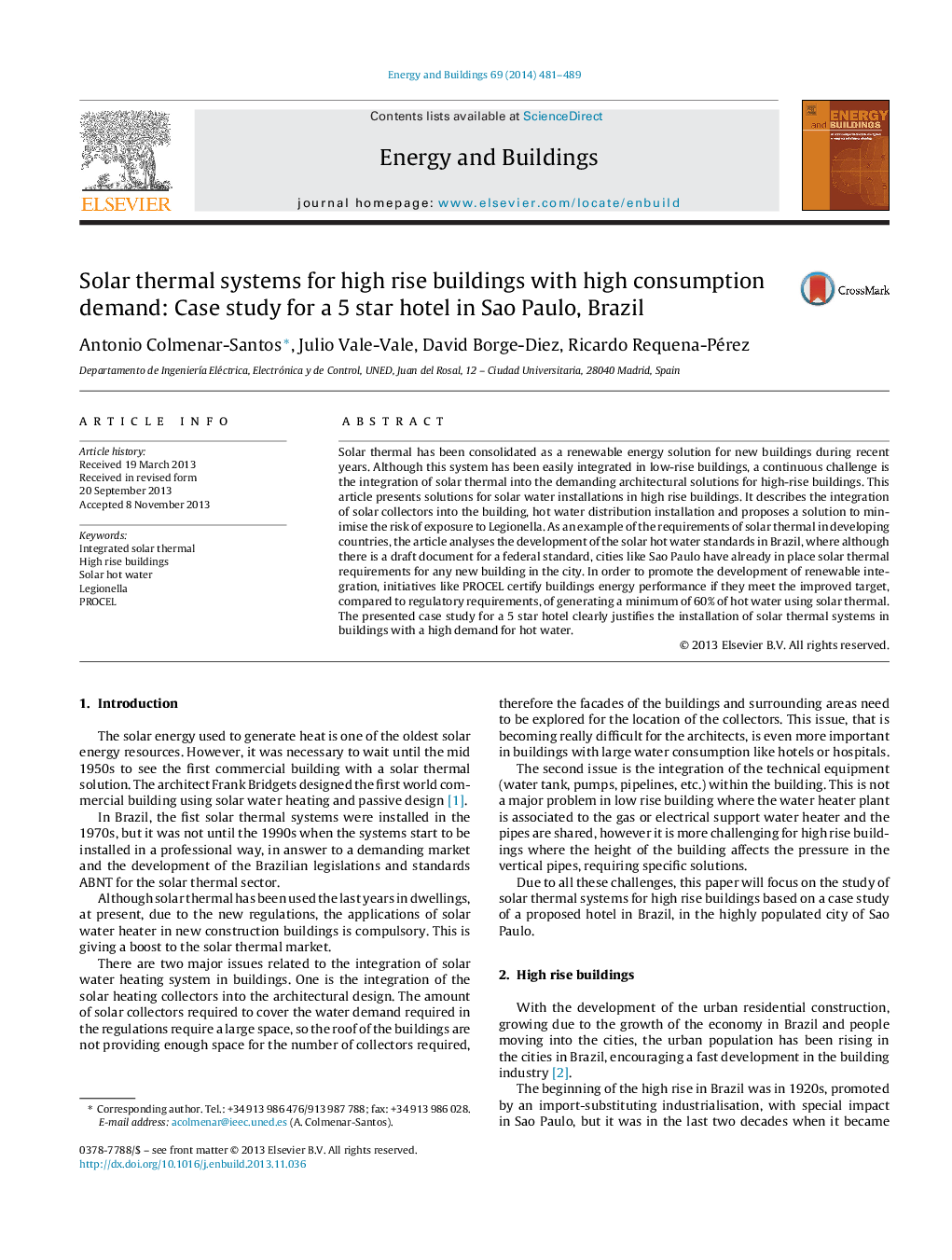| Article ID | Journal | Published Year | Pages | File Type |
|---|---|---|---|---|
| 263170 | Energy and Buildings | 2014 | 9 Pages |
•Hot water distribution in high rise buildings. Case study for a 5star hotel.•Solar thermal equipment location for buildings with restricted floor plate.•Secondary heater solution presented to reduce the risk of exposure to Legionella.•Development of federal, national and local standards in Brazil.•Solar hot water production requirements to achieve a PROCEL certificate.
Solar thermal has been consolidated as a renewable energy solution for new buildings during recent years. Although this system has been easily integrated in low-rise buildings, a continuous challenge is the integration of solar thermal into the demanding architectural solutions for high-rise buildings. This article presents solutions for solar water installations in high rise buildings. It describes the integration of solar collectors into the building, hot water distribution installation and proposes a solution to minimise the risk of exposure to Legionella. As an example of the requirements of solar thermal in developing countries, the article analyses the development of the solar hot water standards in Brazil, where although there is a draft document for a federal standard, cities like Sao Paulo have already in place solar thermal requirements for any new building in the city. In order to promote the development of renewable integration, initiatives like PROCEL certify buildings energy performance if they meet the improved target, compared to regulatory requirements, of generating a minimum of 60% of hot water using solar thermal. The presented case study for a 5 star hotel clearly justifies the installation of solar thermal systems in buildings with a high demand for hot water.
Graphical abstractFigure optionsDownload full-size imageDownload as PowerPoint slide
